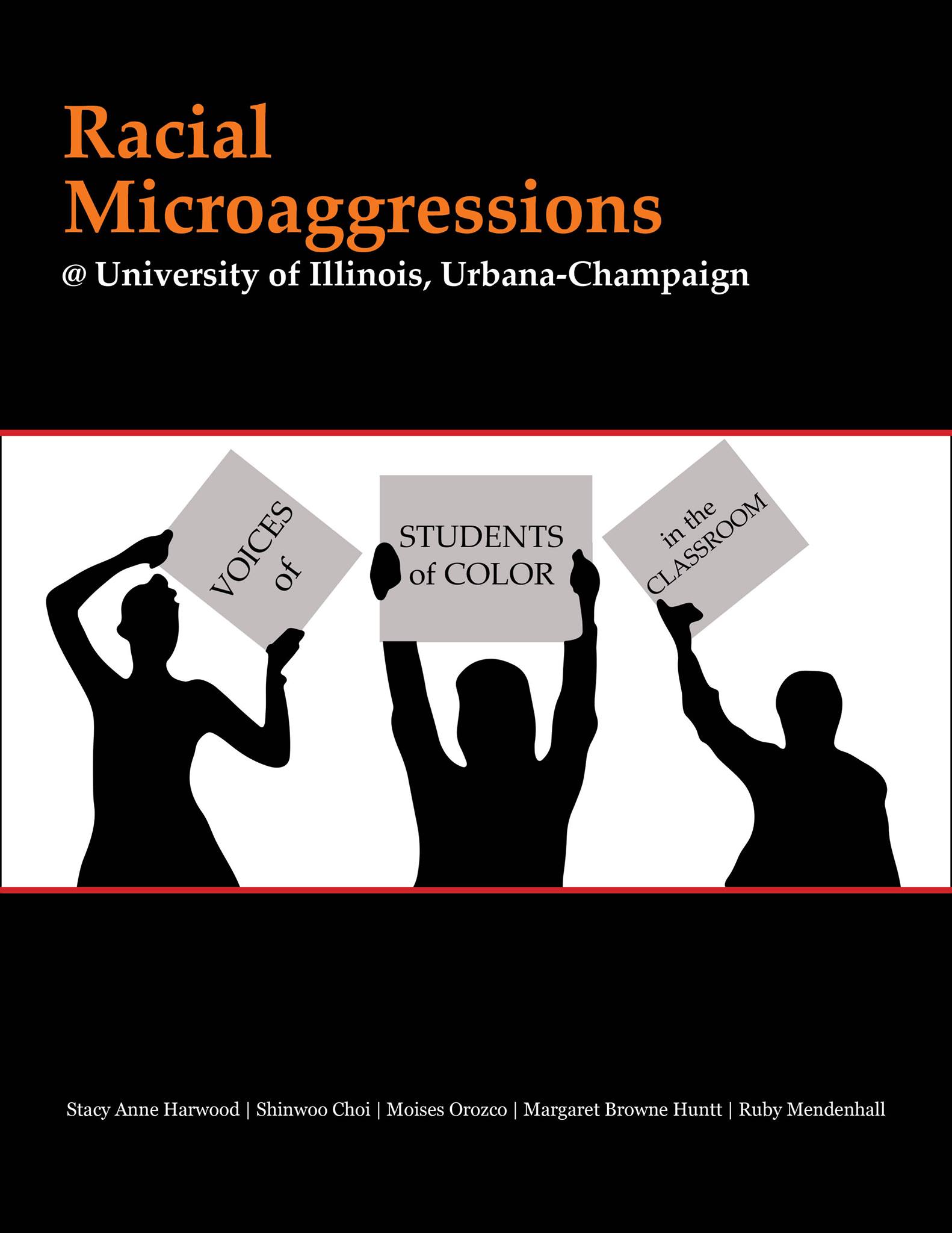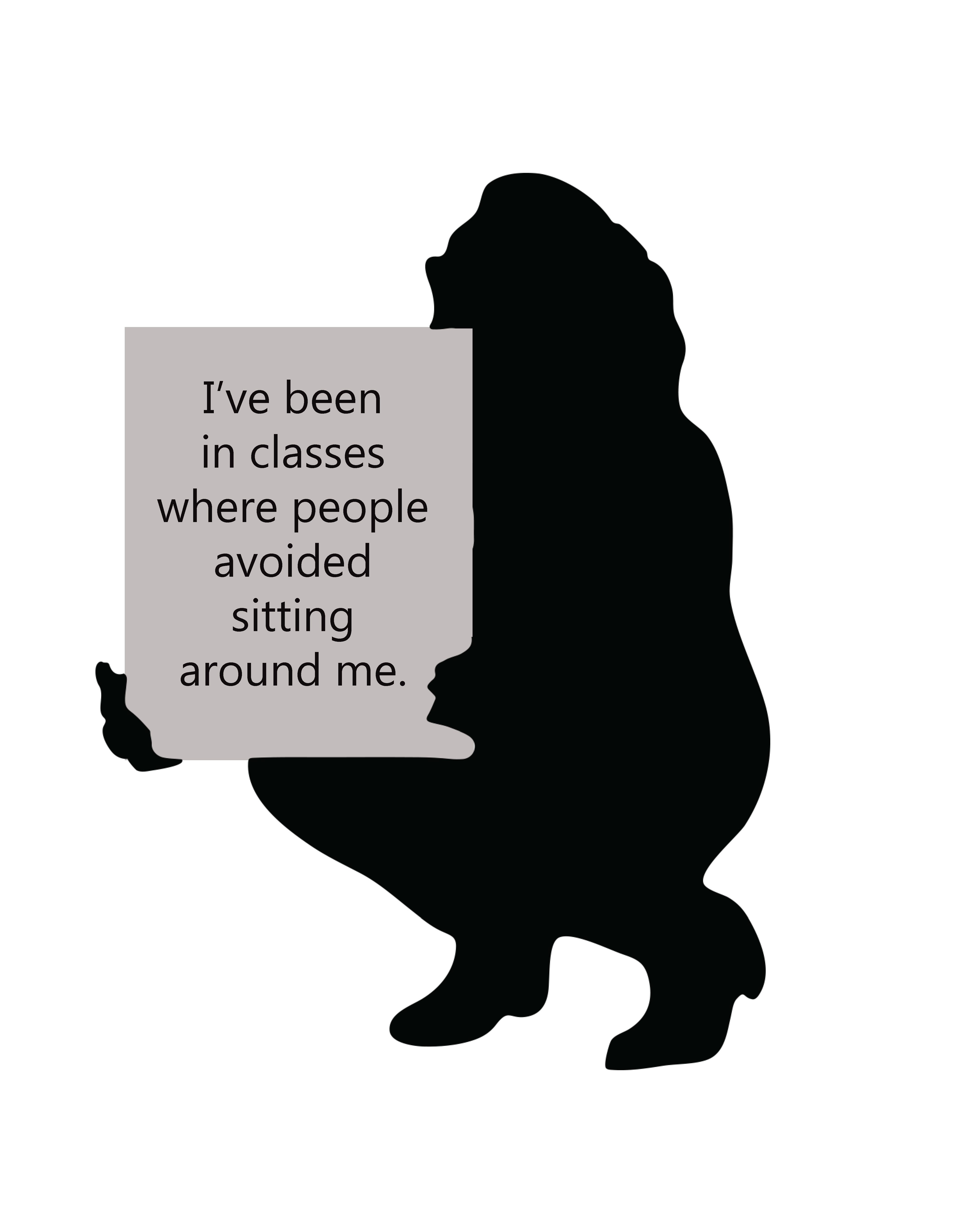Last November, Black Students for Revolution organized a “Black Student Solidarity Rally” with the purpose “simply to show that Black students at UIUC stand in solidarity with Black students across the country.” Not long after, Black students and activists who participated in the rally experienced a racist backlash. Social media apps such as Yik Yak showed messages describing the rally as “Black people chimping out.” A Facebook page called “Illini White Students Union” posted intimidating messages, along with this invitation: “Feel free to send in pictures you take of any black protestors on the quad so we know who anti-whites are.” Since then the page has changed its name to “Illinois White Student Union” and has gathered over 6,000 likes.
In relation to the overall racial campus climate, these events contribute to an atmosphere of over-policing, hostility and surveillance of students of color, an atmosphere amply documented by the University of Illinois Racial Microaggression Research Project in their latest report Racial Microaggressions@University of Illinois, Urbana-Champaign: Voices of Students of Color in the Classroom. Drawing from data gathered in an online survey that received over 4,500 responses from students of color attending the University of Illinois in 2011–2012, the survey revealed that, almost anywhere in and around campus, students of color regularly face racist slurs and verbal and physical threats, and are often assumed to be criminals by police, students, staff, faculty and community members.
Students of color reported hearing students speak in threatening ways or tell others to attack them. At a local bar, a student reported hearing someone declare that if they “saw another [n-word] in this city that they would bring their pistol and shoot them.” An Asian female student reported being chased by a group in the park as they said to each other, “Hey, it’s an Asian! Get her!” And an Asian male student wrote, “[he] told me he was going to kill me and made a gun with his fingers to signify him shooting me.”
Students of color described feeling “unsafe” and “offended” after seeing “KKK spray-painted stamps” on sidewalks around campus. Similarly, the vandalizing of cultural houses is a catalyst of fear for others on campus. Still other students experienced verbal harassment, which instilled fear and raised concerns about safety on campus. One African American woman reported being verbally harassed while waiting for a ride after an evening class:
While I was waiting outside after my class ended at 10 pm, a group of 10–15 white men walked up to me yelling and shouting. I ignored them and did not make eye contact. One guy asked me if I was stupid because the bus wasn’t coming. I asked them to please leave me alone. The group started to walk away and then someone yelled out “[the n-word].” My hands started to shake, and I started to cry because I felt so disrespected. I stayed calm until my ride came to pick me up and cried for the next two days. After that, I avoided large groups of white men, by crossing the street or walking faster. I also avoid walking near or visiting frat houses.
In addition to threats, students of color also described how others often assume they are criminal in and around campus. One African American male student recounts other students “locking doors when I pass by, or look away scared when they see me at night or rather stand up on the bus instead of sitting in the seat next to me.” This fear and criminalization of the student of color pervades classrooms. Students reported that frequently their classmates say that Black and Latinos “commit the majority of crimes,” or “are all drug dealers.” One student shared this: “My roommate…was attacked anonymously by a classmate. The classmate had written on her paper…‘Mexicans don’t deserve to go to college because all they’re good for is gang banging and drug dealing.’”
Latino and African American male students also reported being watched by police, and often stopped to show identification. A Latino student stated, “A cop slowed down and stared me down while I was walking down Green St.” An African American male student reported that a “police officer completed a U-turn to block the path of me and a friend walking late at night during the holiday break. He demanded our IDs and when we questioned his reasoning, he threatened to give us a jaywalking ticket if we didn’t just cooperate with him.”
Students of color often must show identification in order to disarm the suspicion of others around them. One multiracial student reported, “I was sitting…with my friend at night. My friend is a white guy, and the other people who were in the space happened to be white as well. A security guard came up and asked if I could show…my ID. After showing… mine, [the guard] left. No questions to anyone else in the room.”
African American males also describe instances of “fitting the description,” excessive use of force, and racial profiling. The following examples from African American male students illustrate this point. One wrote, “I was racially profiled by police and had my car searched for drugs.” Another reported, “The police almost shot me because they thought I had a gun.” Similarly, another African American male student stated, “I was held [at] gun point and put to the ground by police because I fit a description of a suspect.”
As in other spaces, the campus is a space where the dominant culture ascribes an identity onto persons of color. As the survey shows, students of color feel under surveillance on the UIUC campus, where their racialized bodies are in fact policed. These everyday experiences are similar to what Frantz Fanon characterized as a sense of being “walled in.” In Black Skin, White Masks, Fanon wrote the following about the experience of racialization:
I am the slave not of “the idea” that others have of me but of my appearance…I move slowly in the world, accustomed now to seek no longer for upheaval. I progress by crawling. And already I am being dissected under white eyes, the only real eyes. I am fixed. Having adjusted their microtomes, they objectively cut away slices of my reality. I am laid bare. I feel, I see in those white faces that it is not a new man who has come in, but a new kind of man, a new genus…I slip into corners, and my long antennae pick up the catch-phrases strewn over the surface of things…I slip into corners, I strive for anonymity, for invisibility. Look, I will accept the lot, as long as no one notices me!
At Illinois, Black students refuse this urge to be invisible; they appear every day; they go about studying, researching, teaching, organizing and caring. They appear with beautiful fury in solidarity rallies, disrupting the racist gaze, challenging entrenched assumptions, transforming the campus into a contested space of multiple visible publics and embodying ideals of Black liberation.
Efadul Huq is a graduate student in Urban & Regional Planning at the University of Illinois, Urbana-Champaign.
Stacy Harwood is an Associate Professor in the Department of Urban & Regional Planning at the University of Illinois, Urbana-Champaign.
Ruby Mendenhall is an Associate Professor in Sociology, African American Studies, Urban and Regional Planning, and Social Work at the University of Illinois, Urbana-Champaign. She is also an affiliate of the Institute for Genomic Biology and the Institute for Computing in Humanities, Arts and Social Sciences.
Professors Harwood and Mendenhall are co-Principal Investigators and Efad is a research assistant for the Racial Microaggressions Research Project at the University of Illinois. Our aim is to contribute to scholarly literature about racial microaggressions, to educate the campus community about the negative impact of racial microaggressions and to network and share our findings at other campuses across the United States. Follow us on Facebook and Pinterest.





